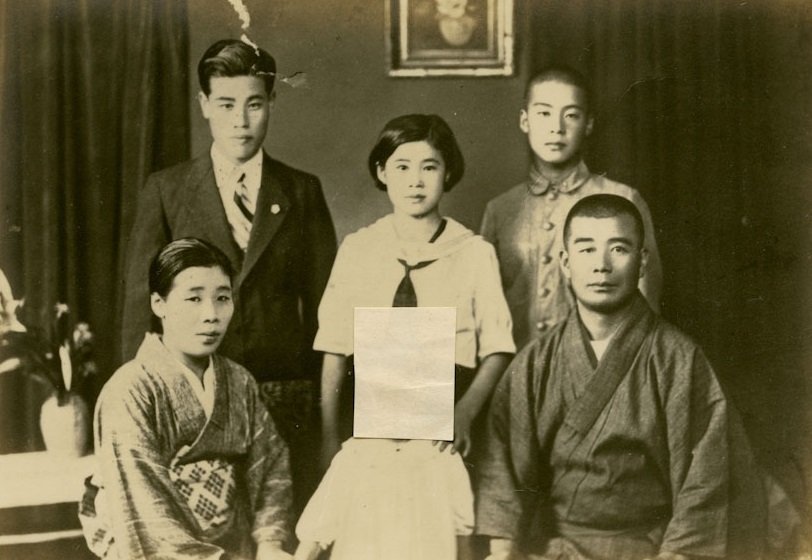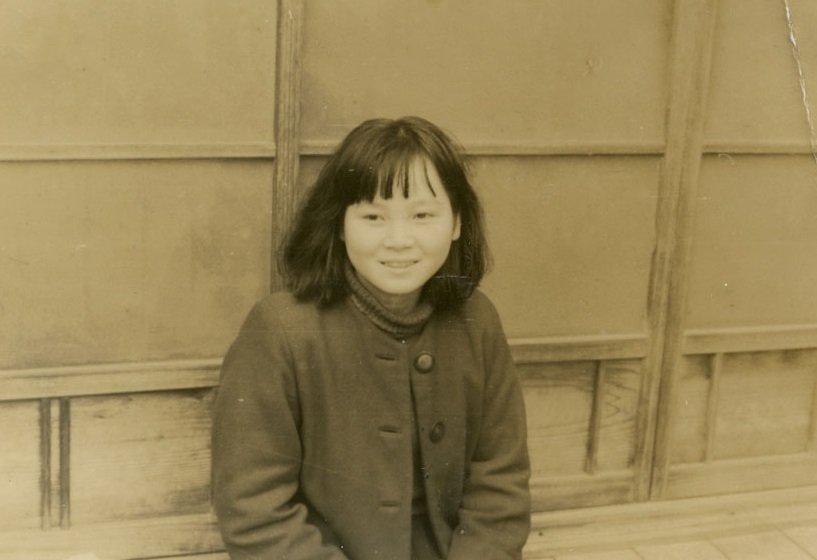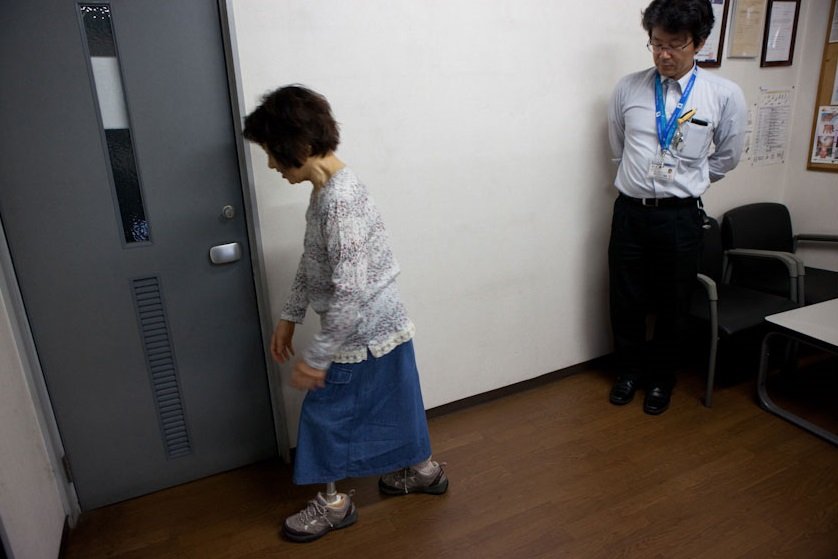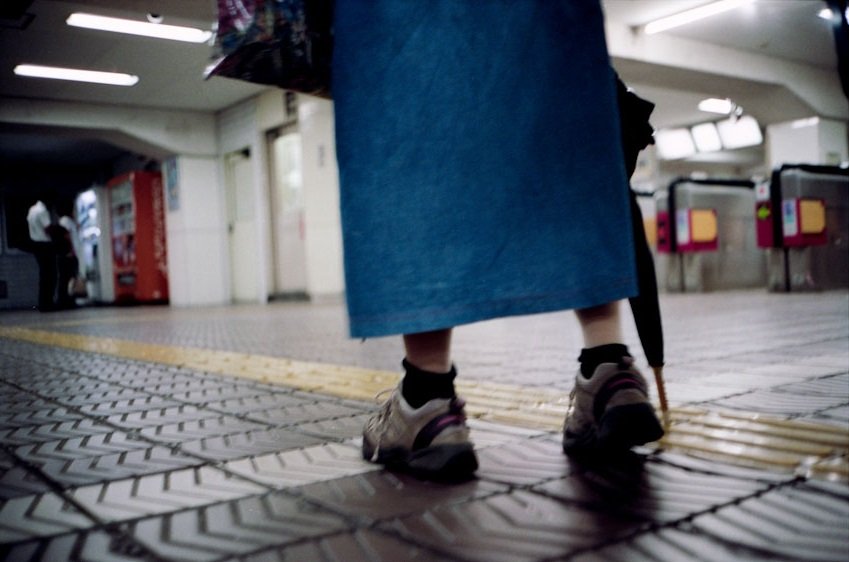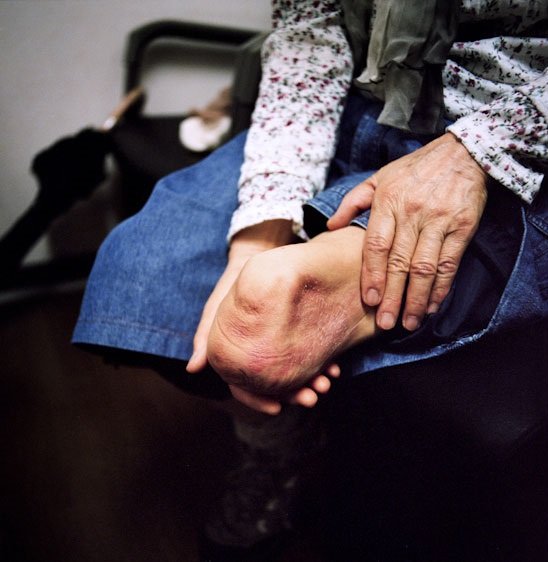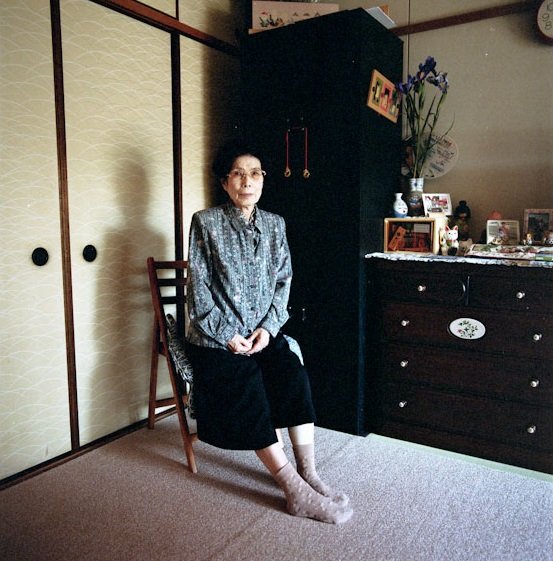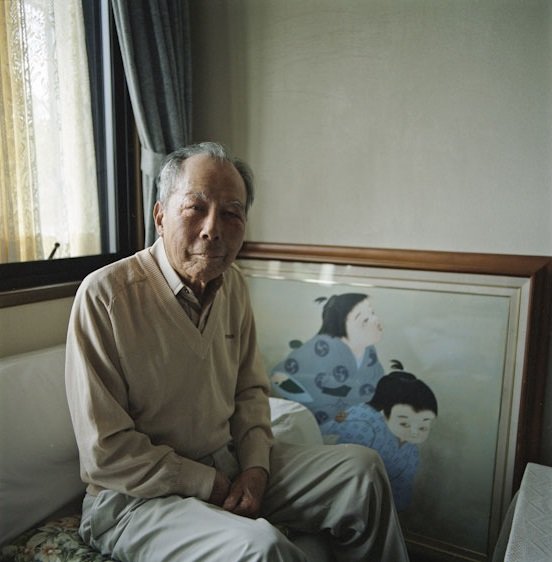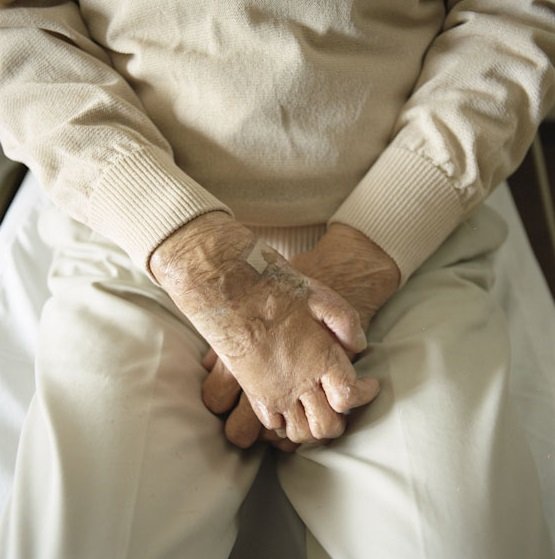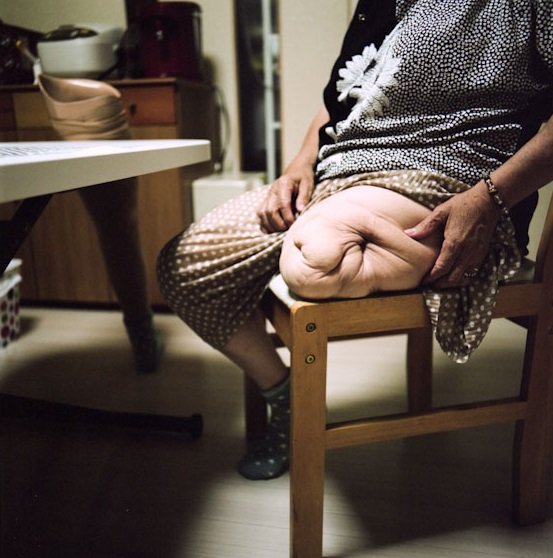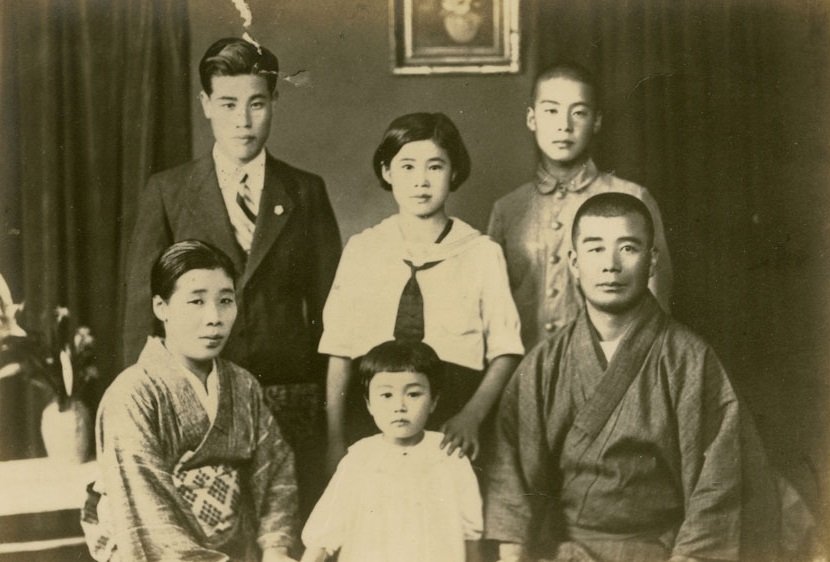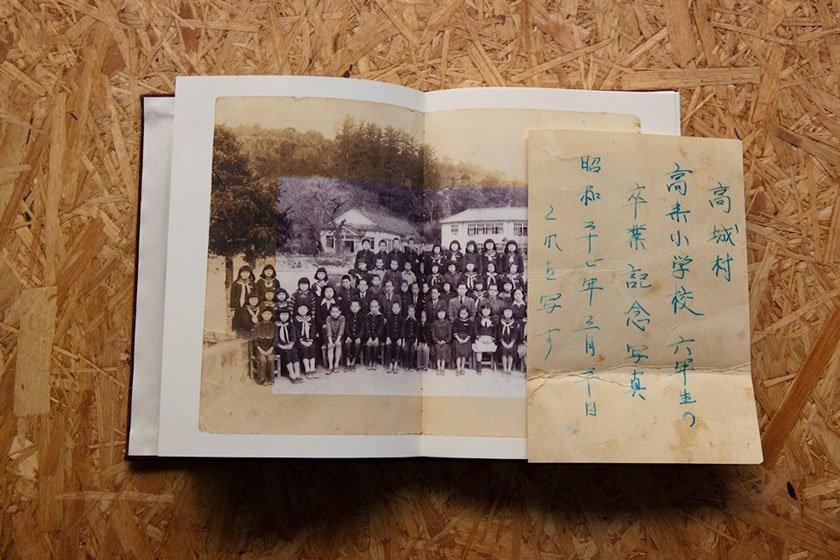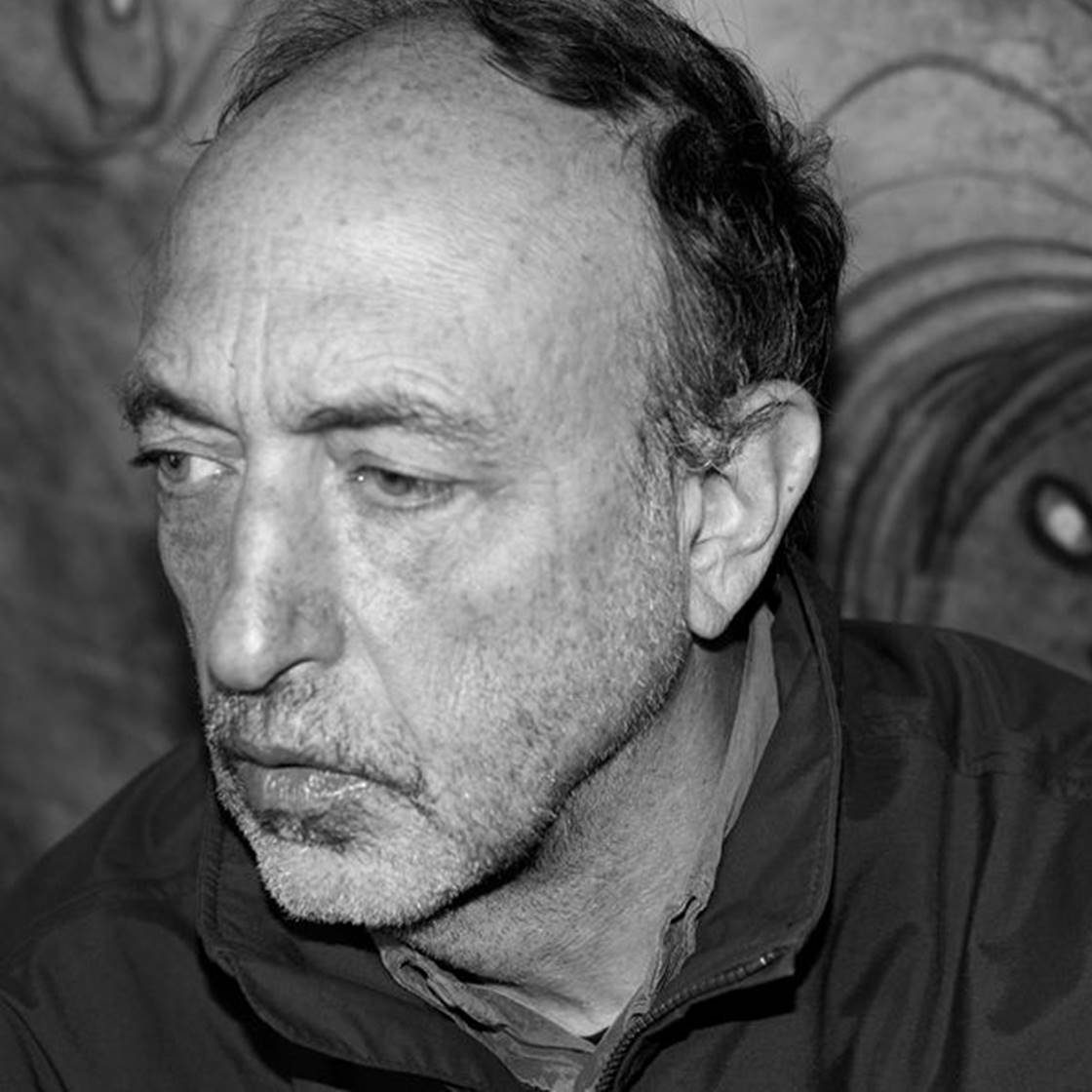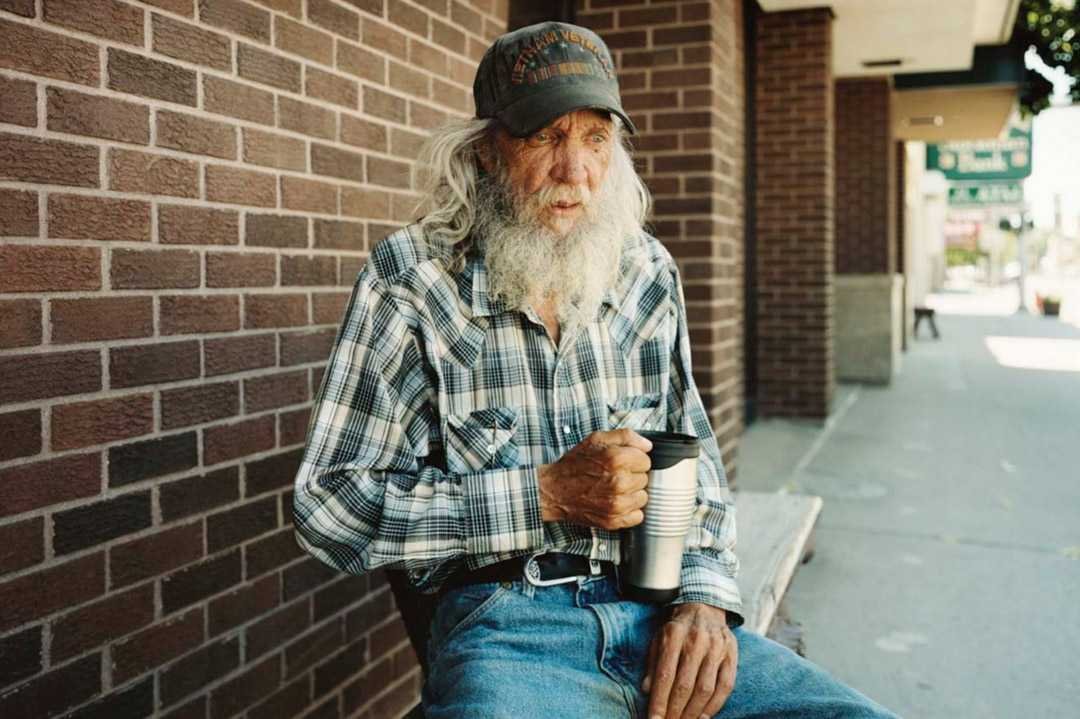Japan –
Grave of the Fireflies is an anime film about the Second World War in Japan. The main characters are a young boy and his younger sister. Their house is bombed, their mother is killed, they are shunned by their family and they go to live beyond the town in a life where the food runs out. It goes beyond miserable. I won’t give away the ending but it is one of the most tragic films I have ever seen, a film where the people who neglect and mistreat these children are almost as bad as the people who bombed them out of their house and home.
Silent Histories, a handmade book made in a sold-out edition of 45 by Kazuma Obara shares many characteristics with Grave of the Fireflies. It’s a book that details the suffering endured by civilians who were injured in the American bombing of Japan. And it’s fantastic.
As an object it is beautiful. It comes bound in ox-blood and brown tweed, with a family portrait from 1930s Japan on the cover. But in the middle of the picture the face of the youngest family member is whited out. She’s missing. She’s hiding herself. This is a book about people who were destroyed by the war, who hide themselves away.
Open the book and the adventure begins. There are inserts; one class picture, four certificates and three replicas of a Japanese propaganda magazine dedicated to showing civilians how to defend themselves against aerial bombing. The introduction to the book details the destruction to life and property endured: ‘The indiscriminate bombing by US forces during the Second World War massacred 330,000 and left 430,000 Japanese civilians injured.’ It highlights the resultant suffering of survivors who, ‘…have lived in the shadows, trying to hide their scars and avoid causing someone trouble by being visible, trying hard to cover their pain.’ And that is what the book is about, the Japanese people who have suffered because of the war. The first subject is Teruko Anno. We see childhood snaps of her, class photos and the background she came from. But we also see waves of American bombers in the sky, their bombs dropping and a destroyed city. The message is clear. America did this. America is to blame.
We also see Teruko at the doctors, her suffering and pain still ongoing, and we hear her story, of how she was bombed in 1945, how she lost her leg, of the malnutrition that took her brother’s life and of the ‘…discrimination and prejudice against the wounds of war.’ Eiko Kobayashi tells her story through an illustrated insert. Her house was firebombed, she ran and was hit by shrapnel, she ended up in a hospital where she stayed for four days until her parents finally found her. It’s a story filled with the wanton violence of war, and what it does to the people who live under it. Kobayashi also suffered prejudice after the war ended. She was blamed for a defective product at the company she worked for; ‘”It’s because you employ people like her with bad legs.”’ And so she resigned, but from then on simply agreed with people who expressed their prejudice. ‘First and foremost, I had to prioritize making a living.’ The tales of suffering and prejudice continue. Mariko Fujiwara’s left leg was injured by a bomb two hours after she was born. She tells us how she went to a public washhouse when she was a child. In the evening to avoid other people. But one day a boy and a girl saw her injured leg. ‘”Mom, look, what a strange leg!” Their mother said, “If you do bad things, your legs become like that too!” When I heard that, I felt so sad. There is a long list of classic Japanese photobooks that deal with how awful the Americans were in the Second World War, that examine the horrors of the blanket bombing of cities and the cruel devastation Hiroshima and Nagasaki. What’s worrisome is, in a country that has never been able to take responsibility for the crimes it committed during the Second World War, the lack of photobooks or photography that recognise the horrors Japan inflicted on the populations of other Asian countries. There are Dutch books, Korean books and Chinese books, but Japanese? Japanese textbooks still skim over what Japan did in the Second World War. It would be nice if there photobooks that did otherwise.
But in a strange and very quiet way, Silent Histories is a step in the right direction. Though it addresses the indiscriminate cruelty of the American bombing campaign, it also addresses the failings of the Japanese government to adequately compensate the victims of the bombing. In a postscript, the photographer Obara writes how he went to attend a ‘…signature-collecting campaign for legislation supporting victims of the air attacks.’ But the legislation hasn’t come, there is no support from a government which still provides compensation for ‘former military personnel, civilian employees and surviving relatives’. The case is coming up to the Supreme Court and the next step is for the victims of the bombings to show the scars they have kept hidden for almost 70 years. So ultimately the book is about making visible the scars and pain of war, of recognising the suffering that civilians go through everywhere, and ending all wars. It’s a dream, but it’s a good one, delivered in outstanding powerful fashion.
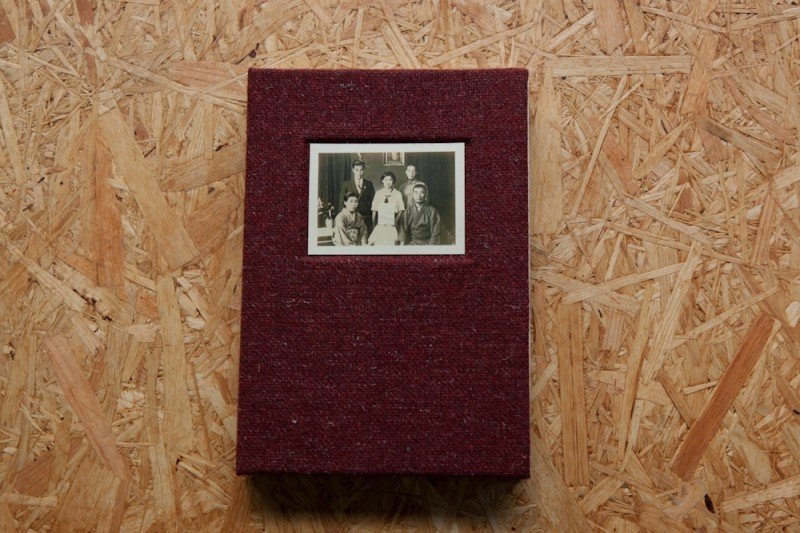
Open the book and the adventure begins. There are inserts; one class picture, four certificates and three replicas of a Japanese propaganda magazine dedicated to showing civilians how to defend themselves against aerial bombing. The introduction to the book details the destruction to life and property endured: ‘The indiscriminate bombing by US forces during the Second World War massacred 330,000 and left 430,000 Japanese civilians injured.’ It highlights the resultant suffering of survivors who, ‘…have lived in the shadows, trying to hide their scars and avoid causing someone trouble by being visible, trying hard to cover their pain.’ And that is what the book is about, the Japanese people who have suffered because of the war. The first subject is Teruko Anno. We see childhood snaps of her, class photos and the background she came from. But we also see waves of American bombers in the sky, their bombs dropping and a destroyed city. The message is clear. America did this. America is to blame.
We also see Teruko at the doctors, her suffering and pain still ongoing, and we hear her story, of how she was bombed in 1945, how she lost her leg, of the malnutrition that took her brother’s life and of the ‘…discrimination and prejudice against the wounds of war.’ Eiko Kobayashi tells her story through an illustrated insert. Her house was firebombed, she ran and was hit by shrapnel, she ended up in a hospital where she stayed for four days until her parents finally found her. It’s a story filled with the wanton violence of war, and what it does to the people who live under it. Kobayashi also suffered prejudice after the war ended. She was blamed for a defective product at the company she worked for; ‘”It’s because you employ people like her with bad legs.”’ And so she resigned, but from then on simply agreed with people who expressed their prejudice. ‘First and foremost, I had to prioritize making a living.’ The tales of suffering and prejudice continue. Mariko Fujiwara’s left leg was injured by a bomb two hours after she was born. She tells us how she went to a public washhouse when she was a child. In the evening to avoid other people. But one day a boy and a girl saw her injured leg. ‘”Mom, look, what a strange leg!” Their mother said, “If you do bad things, your legs become like that too!” When I heard that, I felt so sad. There is a long list of classic Japanese photobooks that deal with how awful the Americans were in the Second World War, that examine the horrors of the blanket bombing of cities and the cruel devastation Hiroshima and Nagasaki. What’s worrisome is, in a country that has never been able to take responsibility for the crimes it committed during the Second World War, the lack of photobooks or photography that recognise the horrors Japan inflicted on the populations of other Asian countries. There are Dutch books, Korean books and Chinese books, but Japanese? Japanese textbooks still skim over what Japan did in the Second World War. It would be nice if there photobooks that did otherwise.

But in a strange and very quiet way, Silent Histories is a step in the right direction. Though it addresses the indiscriminate cruelty of the American bombing campaign, it also addresses the failings of the Japanese government to adequately compensate the victims of the bombing. In a postscript, the photographer Obara writes how he went to attend a ‘…signature-collecting campaign for legislation supporting victims of the air attacks.’ But the legislation hasn’t come, there is no support from a government which still provides compensation for ‘former military personnel, civilian employees and surviving relatives’. The case is coming up to the Supreme Court and the next step is for the victims of the bombings to show the scars they have kept hidden for almost 70 years. So ultimately the book is about making visible the scars and pain of war, of recognising the suffering that civilians go through everywhere, and ending all wars. It’s a dream, but it’s a good one, delivered in outstanding powerful fashion.
Colin Pantall is a UK-based writer, photographer and Senior Lecturer at the University of South Wales, Newport.
